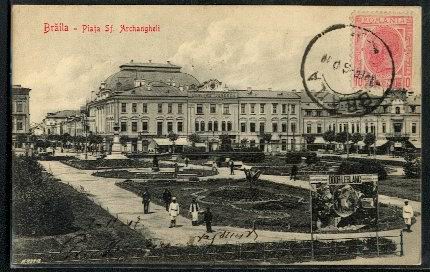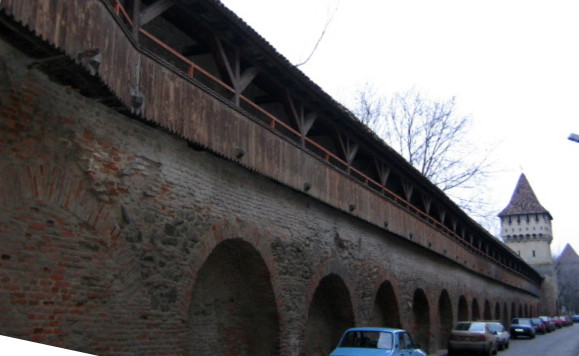|
Constanța Railway Station
Constanţa railway station is the largest station in Constanţa and on the Romanian Black Sea coast. This station is situated on the main Căile Ferate Române Line 800 (Bucharest – Feteşti – Constanţa – Mangalia). Constanţa railway station is served by about 50 passenger trains. During summer, the number of trains and passengers greatly expands. Staff communication is facilitated via VHF Radios, frequency 146.225 AM. The station is served by several bus and minibuses lines. The latest :ro:CT Bus S.A. bus leaves at 23:00 local time. Distance from other railway stations Romania *Arad, Romania, Arad (via Alba Iulia): 845 km *Arad (via Craiova): 829 km *Bacău: 381 km *Baia Mare (via Comănești): 838 km *Braşov (via București Nord): 391 km *Brăila: 256 km *Buzău: 208 km *Cluj-Napoca (via București Nord): 722 km *Craiova: 434 km *Deva, Romania, Deva (via Craiova): 680 km *Iaşi: 430 km *Oradea: 875 km *Pite ... [...More Info...] [...Related Items...] OR: [Wikipedia] [Google] [Baidu] |
Căile Ferate Române
Căile Ferate Române (; abbreviated as the CFR) was the state railway carrier of Romania. The company was dissolved on 1 October 1998 by splitting into several successor companies. CFR as an entity existed from 1880, even though the first railway on current Romanian territory was opened in 1854. CFR was divided into four autonomous companies: * ''CFR Călători'', responsible for passenger services; * ''CFR Marfă'', responsible for freight transport; * ''Compania Națională de Căi Ferate CFR'', manages the infrastructure on the Romanian railway network; and * ''Societatea Feroviară de Turism'', or SFT, which manages Heritage railway, scenic and tourist railways. CFR was headquartered in Bucharest and had regional divisions centered in Bucharest, Brașov, Cluj-Napoca, Constanța, Craiova, Galați, Iași, and Timișoara. Its International Union of Railways code is 53-CFR. History Railways in the nineteenth century The first railway line on Romania's present-day territory w ... [...More Info...] [...Related Items...] OR: [Wikipedia] [Google] [Baidu] |
Brăila
Brăila (, also , ) is a city in Muntenia, eastern Romania, a port on the Danube and the capital of Brăila County. The Sud-Est (development region), ''Sud-Est'' Regional Development Agency is located in Brăila. According to the 2021 Romanian census there were 154,686 people living within the city of Brăila, making it the List of cities and towns in Romania, 11th-most populous city in Romania and the List of cities and towns on the river Danube, 9th-largest of all cities on the river Danube. The current mayor of Brăila is Viorel Marian Dragomir. History Origins Before 14th century, a small village existed in the place of today's Brăila, probably inhabited by fishermen and small merchants.Rădvan, p.248 The village fell to the Mongols during the 1241 Mongol invasion of Europe and it was under direct control of the rulers of Curtea de Argeș, Argeș in mid-14th century. A settlement called ''Drinago'' was found in several 14th century Catalan and Castillian portolan charts ... [...More Info...] [...Related Items...] OR: [Wikipedia] [Google] [Baidu] |
Budapest Keleti Railway Station
Budapest is the capital and most populous city of Hungary. It is the tenth-largest city in the European Union by population within city limits and the second-largest city on the river Danube. The estimated population of the city in 2025 is 1,782,240. This includes the city's population and surrounding suburban areas, over a land area of about . Budapest, which is both a city and municipality, forms the centre of the Budapest metropolitan area, which has an area of and a population of 3,019,479. It is a primate city, constituting 33% of the population of Hungary. The history of Budapest began when an early Celtic settlement transformed into the Roman town of Aquincum, the capital of Lower Pannonia. The Hungarians arrived in the territory in the late 9th century, but the area was pillaged by the Mongols in 1241–42. Re-established Buda became one of the centres of Renaissance humanist culture by the 15th century. The Battle of Mohács, in 1526, was followed by nearl ... [...More Info...] [...Related Items...] OR: [Wikipedia] [Google] [Baidu] |
Berlin Hbf
Berlin Hauptbahnhof () (English: Berlin Central Station) is the main railway station in Berlin, Germany. It came into full operation two days after a ceremonial opening on 26 May 2006. It is located on the site of the historic Lehrter Bahnhof, and on the Berlin S-Bahn suburban railway. The station is owned by DB InfraGO, a subsidiary of AG, and is classified as a Category 1 station, one of 21 in Germany and four in Berlin, the others being Berlin Gesundbrunnen, Berlin Südkreuz and Berlin Ostbahnhof. ''Lehrter Bahnhof'' (Lehrte Station) opened in 1871 as the terminus of the railway linking Berlin with Lehrte, near Hanover, which later became Germany's most important east–west main line. In 1882, with the completion of the Stadtbahn (City Railway, Berlin's four-track central elevated railway line, which carries both local and main line services), just north of the station, a smaller interchange station called Lehrter Stadtbahnhof was opened to provide connections with the n ... [...More Info...] [...Related Items...] OR: [Wikipedia] [Google] [Baidu] |
Timișoara
Timișoara (, , ; , also or ; ; ; see #Etymology, other names) is the capital city of Timiș County, Banat, and the main economic, social and cultural center in Western Romania. Located on the Bega (Tisza), Bega River, Timișoara is considered the informal capital city of the historical Banat region. From 1848 to 1860 it was the capital of the Serbian Vojvodina and the Voivodeship of Serbia and Banat of Temeschwar. With 250,849 inhabitants at the 2021 Romanian census, 2021 census, Timișoara is the country's List of cities and towns in Romania, fifth most populous city. It is home to around 400,000 inhabitants in its Timișoara metropolitan area, metropolitan area, while the Timișoara–Arad metropolis concentrates more than 70% of the population of Timiș and Arad County, Arad counties. Timișoara is a multicultural city, home to 21 ethnic groups and 18 religious denominations. Historically, the most numerous were the Banat Swabians, Swabian Germans, Jews and Hungarians, who ... [...More Info...] [...Related Items...] OR: [Wikipedia] [Google] [Baidu] |
Suceava
Suceava () is a Municipiu, city in northeastern Romania. The seat of Suceava County, it is situated in the Historical regions of Romania, historical regions of Bukovina and Western Moldavia, Moldavia, northeastern Romania. It is the largest urban settlement of Suceava County, with a population of 84,308 inhabitants according to the 2021 Romanian census. During the Late Middle Ages, late Middle Ages, namely between 1388 and 1564 (or from the late 14th century to the late 16th century), this middle-sized town was the capital of the Moldavia, Principality of Moldavia. Later on, it became an important, strategically located commercial town of the Habsburg monarchy, Austrian Empire, and Austria-Hungary (formerly belonging to Cisleithania or the Austrian part of the dual monarchy) on the border with the Romanian Old Kingdom. Nowadays, the town is known for its reconstructed Medieval Seat Fortress of Suceava, medieval seat fortress (further rebuilt through the European Union, EU-funded ... [...More Info...] [...Related Items...] OR: [Wikipedia] [Google] [Baidu] |
Sibiu
Sibiu ( , , , Hungarian: ''Nagyszeben'', , Transylvanian Saxon: ''Härmeschtat'' or ''Hermestatt'') is a city in central Romania, situated in the historical region of Transylvania. Located some north-west of Bucharest, the city straddles the Cibin River, a tributary of the Olt River. Now the seat of Sibiu County, between 1692 and 1791 and 1849–65 Sibiu was the capital of the Principality of Transylvania. Until 1876, the Hecht hause in Sibiu served as the seat of the Transylvanian Saxon University. Nicknamed ''The Town with Eyes'' for the eyebrow dormers on many old buildings, the town is a popular tourist destination. It is known for its culture, history, cuisine, and architecture. In 2004, its historical center was added to the tentative list of UNESCO World Heritage Sites. Sibiu was subsequently designated the European Capital of Culture in 2007, along with Luxembourg City. One year later, it was ranked "Europe's 8th-most idyllic place to live" by ''Forbes''. Sibi ... [...More Info...] [...Related Items...] OR: [Wikipedia] [Google] [Baidu] |
Oradea
Oradea (, , ; ; ) is a city in Romania, located in the Crișana region. It serves as the administrative county seat, seat of Bihor County and an economic, social, and cultural hub in northwestern Romania. The city lies between rolling hills on the Crișana plain, on both banks of the Crișul Repede river. The city lies about from the Hungarian border. Oradea is Romania's List of cities and towns in Romania, ninth most populous city (as of 2021 Romanian census, 2021). It covers between the Apuseni Mountains and the Crișana-Banat plain. Oradea is known for its high standard of living and is frequently ranked among Romania's most liveable cities. It is the region's major industrial and economic hub, and hosts several of the country's major industrial enterprises. The city is also renowned for its striking Art Nouveau architecture and is a member of the Réseau Art Nouveau Network and the Art Nouveau European Route. Etymology The Romanian name ''Oradea'' originates from the cit ... [...More Info...] [...Related Items...] OR: [Wikipedia] [Google] [Baidu] |





